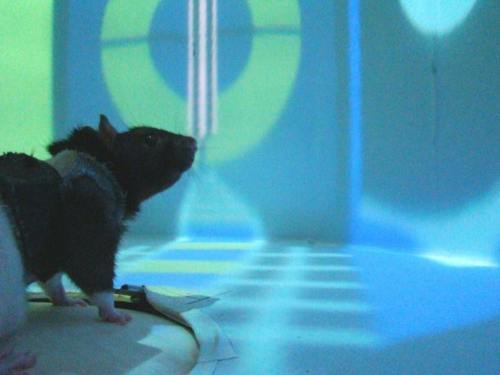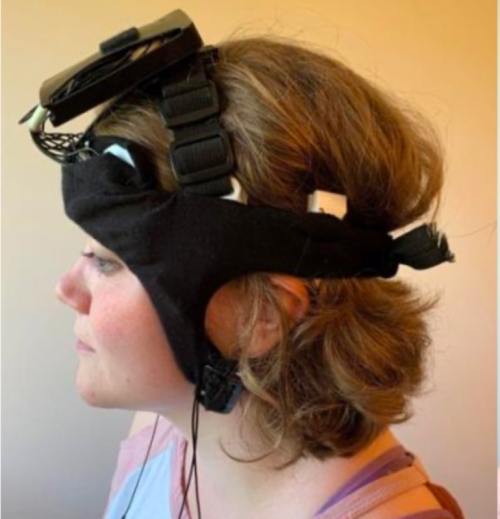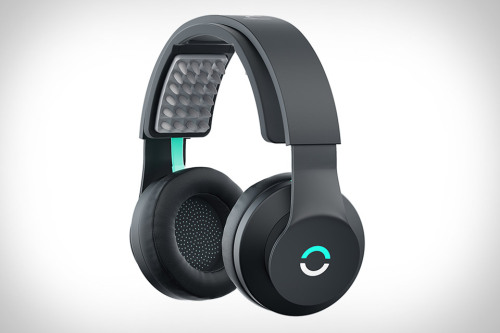#neurotech
VR Experiment With Rats Offers New Insights About How Neurons Enable Learning
Studying rats in a virtual reality maze, researchers discover certain hippocampal neurons play a vital role in a specific mechanism of navigation.
Post link
Initiative to Improve Sleep and Clearance of the Brain
A new study aims to assess the usefulness of a new technology that could speed up and enhance the clearing of metabolic waste via the glymphatic system as a person sleeps.
Post link
Neurostimulation: Halo Sport Neuropriming Headset
And so it begins. Halo has created cool-looking headphones with built-in neuropriming technology, that uses pulses of energy to improve the brain’s response to training, enabling the motor cortex to send stronger, more synchronous signals to muscles. More activated muscle fibers = faster gains in strength.
Apparently, the US Military accelerated pilot and sniper training by 50% with neurotechnology similar to Halo Sport. And if you read the news from yesterdayonimproving your pilot skills by zapping your brain with recorded brain patterns of experienced pilots it sounds fair, plausible and within reach, because halo is also using the tDCS technology.
But the real deal is that brain stimulation devices prepare themselves to go mainstream. Brain-altering gadgets like thync, halo or other neuroelectric wearables are paving the way for new neurocentric brain-machine interfaces, mood-changing services that manually turn up or down happiness and memory augmentation in general. It’s possible that we’re observing nascent signals of a new postnormal revolution, driven by neurotechnologies and electroceuticals.
Sure,hacking the brain is great for health applications and rehabilitation methods. But at the same time I can imagine a lot of socio-technological abuse and misuse. Corporate oppressive mood changes, hacked brainmemories, DIY experiments and emerging neuro-addictions are just the tip of the iceberg. Fun times to be alive.
[halo] [picture by halo]
Post link
Improve your pilot skills by zapping your brain with recorded brain patterns of experienced pilots
Researchers at HRL Laboratories have discovered that low-current electrical brain stimulation can modulate the learning of complex real-world skills.
The study, published in an open-access paper in the February 2016 issue of the journal Frontiers in Human Neuroscience, found that novice pilots who received brain stimulation via electrode-embedded head caps improved their piloting abilities, with a 33 percent increase in skill consistency, compared to those who received sham stimulation. “Pilot skill development requires a synthesis of multiple cognitive faculties, many of which are enhanced by tDCS (transcranial direct current stimulation) and include dexterity, mental arithmetic, cognitive flexibility, visuo-spatial reasoning, and working memory,” the authors note.
Phillips speculates that the potential to increase learning with brain stimulation may make this form of accelerated learning commonplace. “As we discover more about optimizing, personalizing, and adapting brain stimulation protocols, we’ll likely see these technologies become routine in training and classroom environments,” he says. “It’s possible that brain stimulation could be implemented for classes like drivers’ training, SAT prep, and language learning.”
Is there a word for the period, when reality catches up with scifi? Postnormal is a good start. Are there others?
Implanting False Memories
Snip from the NOVA documentary “Memory Hackers”, which aired on February 10, 2016 at PBS. Dr Julia Shaw wrote a book on the science of memory hacking: “The Memory Illusion” will be available starting June 2nd from Penguin Random House.
Btw: I warmly recommend to read The Machine written by James Smythe. It’s a neogothic scifi chamber play about broken love, the implications of nascent neurotech, dementia and domestic abuse. One of my favorite scifi stories in recent years:
Haunting memories defined him. The machine took them away. She vowed to rebuild him. From the author of The Testimony comes a Frankenstein for the twenty-first century.
Beth lives alone on a desolate housing estate near the sea. She came here to rebuild her life following her husband’s return from the war. His memories haunted him but a machine promised salvation. It could record memories, preserving a life that existed before the nightmares.
Now the machines are gone. The government declared them too controversial, the side-effects too harmful. But within Beth’s flat is an ever-whirring black box. She knows that memories can be put back, that she can rebuild her husband piece by piece.
Studio Smack - Branded Dreams: The Future of advertising
We’re not there yet. Guess that’s the best way to describe the status of nascent technologies like neurotech-brain-reading-devices and inception methods, memory implants and memory augmentation at the moment without the use of hype and buzzwords a la: “it will disrupt the way we live”or“this tech will change everything blabla”.
But how to talk about emerging technologies, socio-technological trends and changing societal patterns in a nutritious way? One of the best mix methods approaches for a broader audience is to research possible implications of emerging technologies and visualize them in a discussion-ready format for a broader audience.
In this case: If we know how to hack our brains and mix it with typical advertising and marketing strategies, what are possible outcomes? Studio Smack has created a great visual scifi prototype (and/or design fiction with flaws) for a postnormal world, that should spark discussions with contrasting points about the implications of neurotechnologies:
We see ads everyday and everywhere. They have become part of our life. While some people try to avoid seeing ads, advertisers keep finding new ways to reach us. However they are unable to reach us when we sleep. Our dreams are the last safe and add-free place so it seems.
But what happens when advertisers have the possibility to enter our dreams? Based on recent developments in brain science and technology this might be possible in the near future.
Chapeau! Great work.
3 Implications of Memory-Boosting Devices
Ben Thomas wrote for Discover Magazine about the socio-technological implications of memory-boosting devices:
In fall, DARPA announced a major success in its Restoring Active Memory (RAM) program. Researchers implanted targeted electrical arrays in the brains of a few dozen volunteers — specifically in brain areas involved in memory.
The researchers found a way to read out neural “key codes” associated with specific memories, and then fed those codes back into the volunteers’ brains as they tried to recall lists of items or directions to places. While the results are still preliminary, DARPA claims that the RAM technique has already achieved “promising results” in improving memory retrieval.
Intriguing as this implant is, it’s only the latest in an ongoing series of neurological techniques and gizmos designed to boost and sharpen memory. The effects and implications of these systems raise questions that are worth consideration.
Worth a read. By this way: You should check out The MachinebyJames Smythe. A fantastic & powerful near scifi story about Beth and Vic, who returned from war tormented by his nightmares.“His once happy marriage to Beth all but disintegrated. A machine promised salvation, purging him of all memory. Now the machines are gone, declared too controversial, the side-effects too harmful. But within Beth’s flat is an ever-whirring black box. She knows that memories can be put back and that she can rebuild her husband piece by piece. ” Definitely worth a read. One of my favorites in 2015.
Post link





